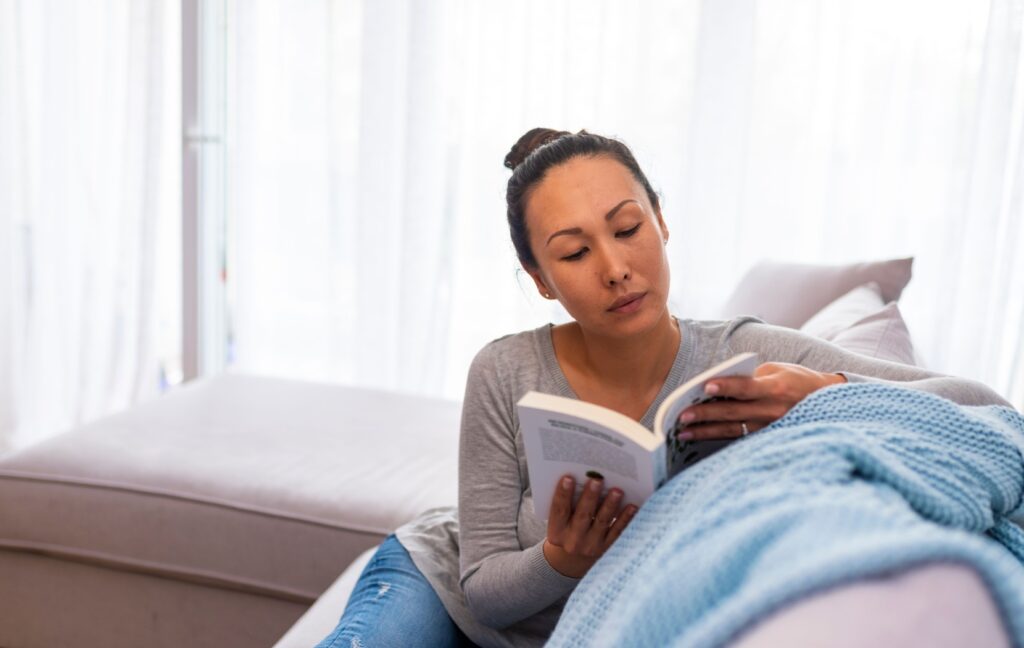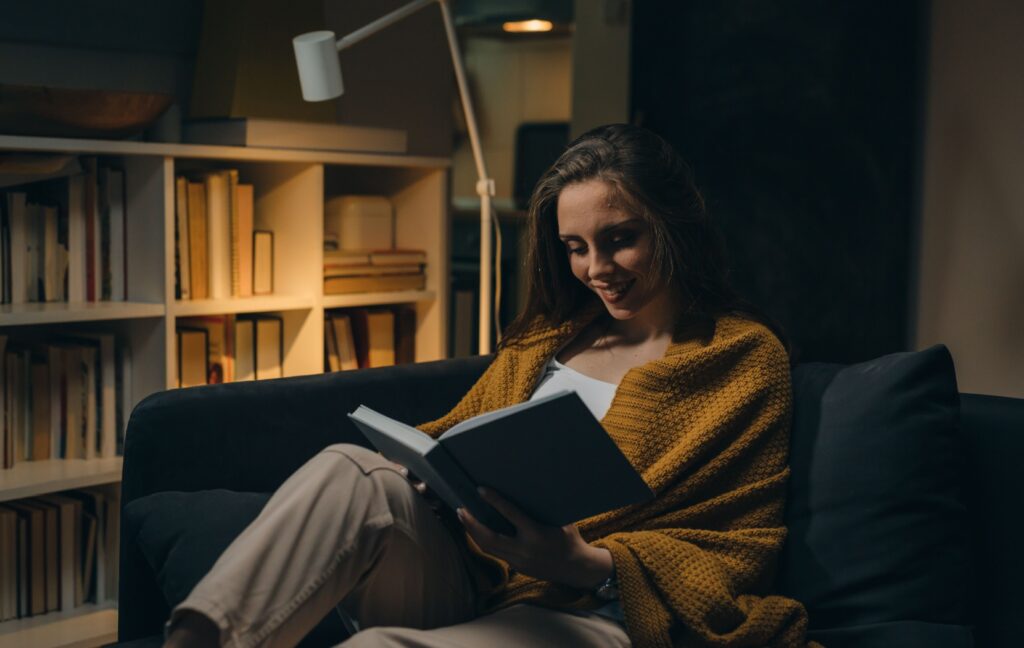There’s been a cautionary tale passed from one generation to the next about reading in the dark. We’ve all heard it—that reading in dim light is bad for your eyes. But is it true?
Luckily, reading in the dark won’t permanently harm your eyesight, but it can cause temporary discomfort and eye strain. However, if you find you’re having problems focusing on the pages in front of you all the time, it may be time to see an eye doctor or consider a pair of prescription reading glasses.
What Happens When You Read in Dim Light?
The belief that reading in dim light causes eye damage is probably because of how your eyes react when placed under strain. Poor lighting requires more effort from the muscles around your eyes that control focus, leading to fatigue. This temporary discomfort may lead people to think that reading in dim light causes eye damage.
Struggling to read in the dark may lead to temporary symptoms such as:
- Eye strain: Your eyes work harder to focus, which can leave them feeling tired or sore.
- Headaches: Spending a long time reading in poor lighting could trigger strain-induced headaches.
- Dry eyes: You may blink less frequently, a common issue with activities like reading or screen use, compounded by low light.
While these effects don’t harm your eyes permanently, they can be uncomfortable.
How Your Eyes Work in Low Light
Your eyes are pretty incredible when adapting to changing lighting conditions. Here’s what happens:
- The pupil expands, allowing more light to pass through to the retina.
- Low-light vision cells called rods activate to help you see contrasts and shapes better in low-light situations.
However, while your eyes can handle dim settings temporarily, they aren’t built to sustain perfect sharpness and clarity for reading over long periods in such conditions.
Why Does Reading Feel Harder in Dim Light?
When lighting is inadequate, the contrast between the text and the background diminishes, making it harder for your eyes to focus on the words. This forces your focus muscles to work overtime.
By forcing your eye muscles to work harder they will tire out more quickly. This means that after a while, it will feel harder to read in the dark than it does to read in bright lighting.
Should You Avoid Reading in the Dark?
Not necessarily! Reading in dim light for short periods is fine, as long as you’re aware of how it makes you feel. If you notice discomfort, pause and consider turning on a brighter light.
Over time, constantly exposing your eyes to poor lighting conditions could lead to other habits that impact overall eye health, like neglecting proper breaks or ignoring symptoms of strain.

Tips for a Comfortable Reading Experience
Want to enjoy your late-night page-turners while keeping your eyes happy? Here are some simple tips!
1. Use Good Lighting
The best solution is to ensure your space has balanced lighting.
- Go for adjustable lamps that can direct light where you need it most.
- Use bulbs with “warm white” tones, which are gentler on your eyes.
2. Position Your Light Source Correctly
Place your light to shine directly on your book or screen, but avoid creating glare. For example:
- A bedside lamp with a shade can provide a soft, even glow.
- Avoid backlighting, which can cast shadows over your reading material.
3. Take Regular Breaks
Follow the 20-20-20 rule recommended by eye care professionals. Look at something 20 feet away for 20 seconds every 20 minutes. This rule isn’t just for screen users—it applies to readers, too!
4. Blink Often
Don’t forget to blink! When we’re focused (whether on books or screens) we tend to blink less. Make a conscious effort to prevent dry eyes. If dryness persists, consider artificial tears recommended by an optometrist.
5. Focus on Posture and Distance
Proper viewing distance matters. Hold your book about 14–16 inches from your eyes, and keep your neck and shoulders relaxed to avoid additional strain.
6. Don’t Ignore Symptoms
Frequent or severe eye discomfort could signal an underlying issue. If symptoms like headaches, blurry vision, or persistent dryness occur regularly, consult an eye care professional.
The Larger Picture: General Eye Health
While the occasional late-night reading session won’t wreck your vision, it’s important to adopt healthy eye care habits overall. Remember to:
- Schedule regular eye exams to monitor changes in your vision.
- Eat a diet rich in nutrients that support eye health, like leafy greens, carrots, and omega-3 fatty acids.
- Protect your eyes from extended periods of screen exposure—a habit that’s far more likely to cause strain than reading in dim light.
Don’t Let Eye Strain Slow You Down
If the thought of curling up with a good book in the moody glow of a single lamp makes you happy, don’t worry! Read to your heart’s content—just be mindful of how your eyes feel and make adjustments as needed.
If you’re experiencing frequent eye strain, it might be time to visit an optometrist. At Santa Cruz Optometric Center our professional team is here to help you find eye strain solutions so you can get back to evening reading sessions. Book an appointment today.



